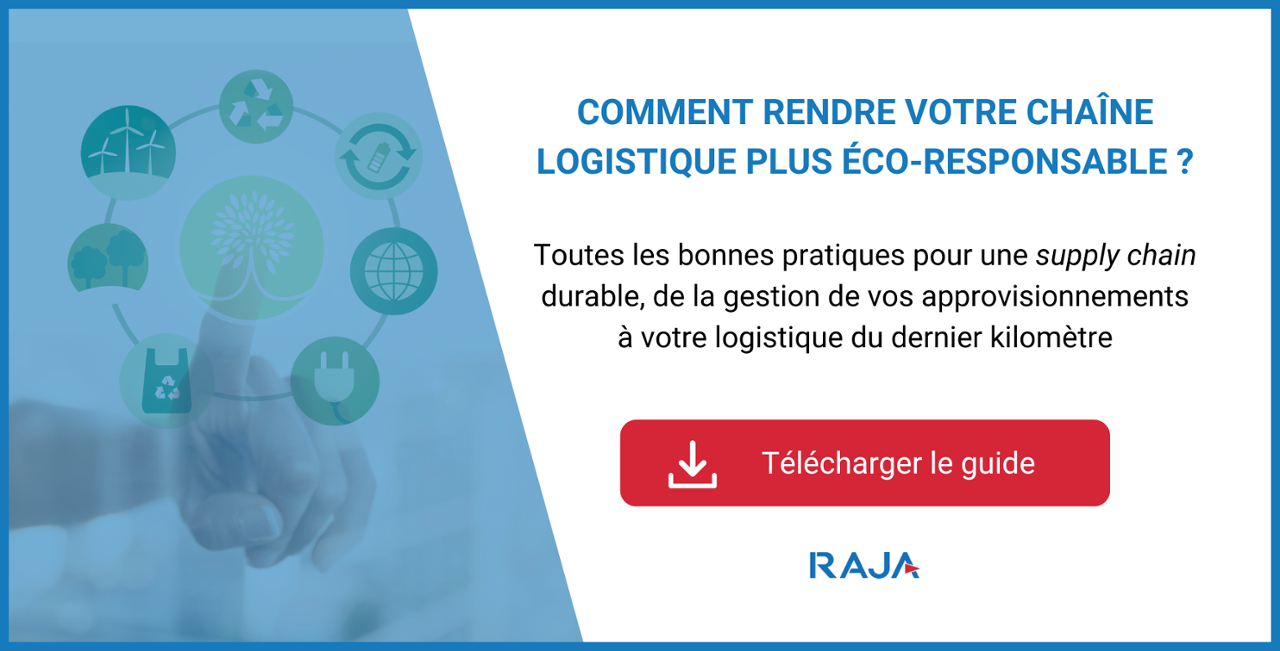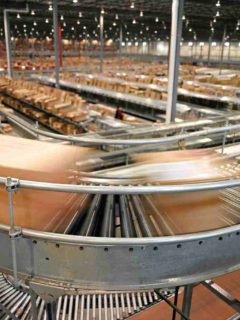The concept of the circular economy speaks to you, but you didn’t think you could do anything about it as a business? The logistics industry of tomorrow can, and should, reduce its environmental impact.The question is: how? You may not know it, but you can implement changes throughout the supply chain to make it more sustainable. We guide you in integrating the circular economy into your logistics strategy.
Circular economy: a definition
An economic system in which goods and services are produced in a sustainable way is a circular economy. It focuses on a number of different issues
- Reduce consumption
- Limit the waste of resources
- Develop economically and industrially the territories
- Produce less waste
the circular economy aims to preserve the environment, but also the health and well-being of citizens.It must also generate sustainable activity and create jobs that cannot be relocated.Finally, the circular economy is based on economic, social and environmental issues: it is one of the commitments of sustainable development.
What are the 7 pillars of the circular economy?
The implementation of a circular economy is based on 7 axes of progress that can be adapted to the logistics sector.
1/ Eco-design of products
Eco-designconsists of taking into account the environmental impact of a product from the moment of its design.It requires evaluating all the stages of the item’s lifecycle.In logistics, responsible design applies above all to your packaging.Here are three ways of integrating eco-designed packaging
- Use more environmentally friendly raw materials: recycled cardboard and paper, biodegradable materials, biosourcedmaterials, etc
- Optimise the weight-volume of your packaging: reducing the weight-volume leads to a reduction in transport costs and a limitation of CO2 emissions.
- Anticipate the end of life of the packaging, to ensure that it goes through the sorting channels and is thus recovered.

2/ Sustainable sourcing
The idea: consider the social and environmental impact of resources. To integrate this pillar into your logistics hub, you need to compare the manufacturing resources of your different suppliers.
3/ Industrial and territorial ecology
The idea? Optimise the resources used for an activity by pooling their use between different players. This pillar concerns all types of resources
- Materials
- Energy and water flows
- Infrastructure
- Goods
- Services
you can, for example, share resources and transport costs by opting for collaborative delivery.
4/ Functional economy
The principle is to get out of the era of overconsumption by developing service activities rather than selling goods in excess.
5/ Responsible consumption
The idea is to help your consumers to consciously buy products or services for which the environmental or social impacts are thought through.You can also apply this principle to your own supply strategy.Your electricity supplier, your raw materials, your packaging or even your carrier are all points of vigilance.
6/ Extending the duration of use
This pillar consists of promoting repair and reuse, rather than buy-back.You can, for example, send your products in return packaging to encourage reuse.
7/ Improving
the
- Promote recyclable packaging
- Implement a sorting system in the warehouse
- Provide reusable containers for the picking phase..
4 ways of integrating the circular economy into logistics
Your logistics strategy relies on a variety of service providers and resources. The scale of your business can sometimes make it difficult to implement circular economy principles, but there are a few ways of improving your eco-responsibility. Here are 4 of them, to help you start the ecological transition of your supply chain.
1/ Choose sustainable supply methods and service providers
You have control over the choice of your supply methods and service providers: take advantage of this! This is an opportunity to promote your values to your customers. There are a variety of levers that can be used to ensure that the supply of goods is more environmentally friendly
- Choose a service provider that is geographically closer
- Select products for their quality, even if it means reducing the number of references
- Pooling supplies with neighbouring industries..
2/ Eco-designing your products and/or packaging
Eco-design is the first pillar of the circular economy mentioned. It applies to the product itself, and also to its packaging. Different factors make an item sustainable or not
- The nature of the raw materials (for the packaging or the product): recycled, biosourced, recyclable
- The water consumption necessary for its production
- Energy consumption, which is higher for plastic packaging for example
- The carbon footprint throughout the life cycle of the product.
you can play on these different factors by consciously selecting your packaging and suppliers.
3/ Choosing eco-responsible packaging
The 5Rs method of packagingis a classic for more eco-responsible logistics. In this approach, it is about
- Reduce the weight and volume of your shipments and protect your products without overpacking
- Reuse packaging wherever possible
- Replace high impact packaging with more environmentally friendly alternatives
- Replace packaging with a high environmental impact with more eco-responsible alternatives.
- Recycle packaging as much as possible
a multitude of packaging choices are then available to you
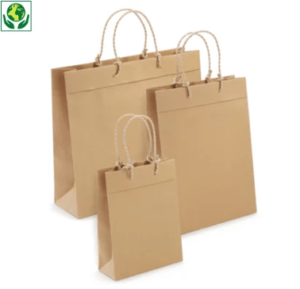 |
Kraft packaging can be recycled and is a strong material that gives your packages an attractive appearance. |
 |
Corn starch is an example of a biobased material used for packaging and has the ability to hold food. |
 |
Reusable also applies to packaging. This type of packaging is not only more environmentally friendly, but also stronger. An example is the Hipli package, an e-commerce shipping pouch that can be reused up to 100 times. |
4/ Promote recycling within your warehouse
In addition to selling products in eco-responsible packaging to encourage consumers to sort, you can also act on waste management within your company. There are 5 circular waste flows within a company
- Paper and cardboard
- Metal
- Glass
- Wood
- Plastic
you can use specific bins or containers to facilitate sorting by type of waste in the warehouse
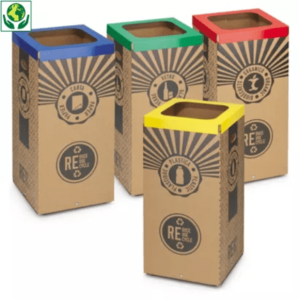 |
These cardboard sorting bins are available in 60 or 100 litre sizes and have a graphic design that adds to their aesthetic appeal. |
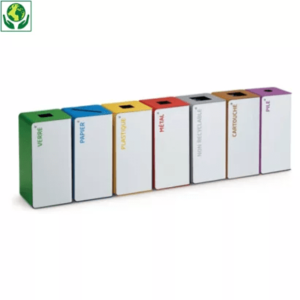 |
Cubatri’s waste separation bins allow for up to 8 waste streams. |
as you can see, the circular economy concept applies to your entire supply chain. From the choice of raw materials to the means of delivery, you have the opportunity to move towards a more sustainable logistics warehouse. Less relocation and giving preference to local players will also strengthen your social impact as a company. Even more specific to the logistics sector, discover the challenges of circular packaging











